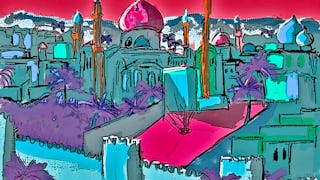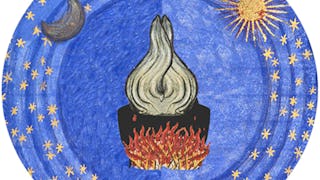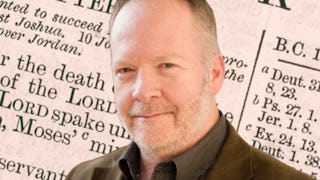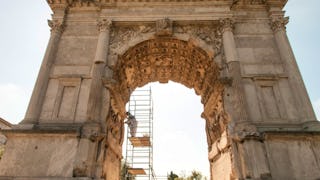This course explores Jewish, Christian, and Muslim intercultural relations in Iberia from the Visigothic era (6th century CE) until the creation of Queen Isabel I and King Ferdinand II Catholic Spain (late 15th century). We evaluate the many identities of the peninsula known as Christian Hispania, Jewish Sefarad, and Islamic al-Andalus. We trace the origins and trajectory of conflict between these communities (the Muslim conquest of Spain, Christian Reconquista, prohibitions blocking intermixing of peoples, and expulsions). We aim to understand conflicts within communities as well, such as the tensions between Christian Arian Visigoths and native Catholic Iberians or the fundamentalist North African Almohad Dynasty that rejected the Spanish Umayyad Caliphate’s preference for religious tolerance. We delve into an appreciation of collaboration and coexistence among these communities. We explore the unique role of the Jewish community who Muslims and Christians depended upon as political and cultural intermediaries as well as their intellectual collaborators. We find the history of how peoples attempted to create and manage viable diverse communities. As we study this history, the Honors Track will employ an investigative process (“The Historian’s Craft”) that involves viewing, reading, analyzing, and reflecting on events, peoples, places, and artifacts.


Coexistence in Medieval Spain: Jews, Christians, and Muslims

Instructor: Roger L Martinez
15,490 already enrolled
Included with
(137 reviews)
Skills you'll gain
Details to know

Add to your LinkedIn profile
See how employees at top companies are mastering in-demand skills

There are 5 modules in this course
This week introduces the idea of co-existence in medieval Spain. We begin our study of medieval Spain by briefly viewing Roman Spain and then learning about the Visigoths. Supplemental information places medieval Iberia within the contexts of European, Byzantine, and Islamic civilizations. The honors section of the course introduces "The Historian's Craft" and the task of "viewing".
What's included
6 videos29 readings3 assignments1 peer review3 discussion prompts
In this section of the course, we advance our investigation of medieval Spain to learn about Islamic al-Andalus (Islamic Spain) and Jewish Sefarad (Jewish Spain). This includes a study of the Islamic conquest of Visigothic Spain and the subsequent development of the Umayyad Dynasty. We evaluate the complexities of conflicts between religious groups and within religious groups. We witness interfaith collaboration. Islamic sciences are presented as is the Golden Age of the Spanish Jews. We view Islamic art and architecture. Lastly, in our honors section we continue with our study of the Historian's Craft and the task of "reading".
What's included
8 videos16 readings3 assignments1 peer review1 discussion prompt
First, we continue with an investigation of the third principal culture of Iberian Peninsula -- Spanish Christian Hispania. We seek out more specific examples of the Christian kingdom's impact on political, religious, social, intellectual, and economic issues. Next, we examine the rise of the Spanish Christian Kingdom of Castile and Leon and the impact of King Alfonso X "The Learned". We study how Spanish Christians created culture through material objects and architecture. In addition, we explore the complications of Christians governing religious minorities in their lands. The honors section of the course continues with our study of the Historian's Craft and the task of "analyzing".
What's included
5 videos16 readings3 assignments1 peer review
This section of the course presents the end of coexistence in medieval Spain, which was characterized by the creation of new types of peoples (conversos, Jewish converts to Christianity), religious intolerance and expulsions. Multiple examples of the fluctuations in the relationships of Jews, Christians, and Muslims, are examined as Catholic Spain took shape. Special attention is also directed to Spanish archives that preserve this history. We take a closer look at the end of convivencia in the city of Plasencia, Spain, and view a digital video narration. As the Spanish Middle Ages did not occur in a vacuum, we share with you eight scholarly endeavors from the "Global Middle Ages" Project. The honors section of the course continues with our study of the Historian's Craft and the task of "reflecting" and features the music of the Texas Early Music Project.
What's included
15 videos20 readings2 assignments1 peer review2 discussion prompts
The final section of the course prompts students in the Honors Track to interpret and evaluate a historical artifact from medieval Spain (a material object, architecture, or a manuscript). This peer-reviewed project is not a required to complete the course as a regular student.
What's included
7 readings1 peer review1 discussion prompt
Instructor

Offered by
Explore more from History
 Status: Preview
Status: PreviewUniversiteit Leiden
 Status: Preview
Status: PreviewUniversitat de Barcelona
 Status: Preview
Status: Preview Status: Preview
Status: PreviewYeshiva University
Why people choose Coursera for their career




Learner reviews
137 reviews
- 5 stars
72.26%
- 4 stars
18.97%
- 3 stars
2.91%
- 2 stars
2.91%
- 1 star
2.91%
Showing 3 of 137
Reviewed on Dec 30, 2018
well covered subject. However, the audio quality of nearly all of the Spanish speakers was terrible. I speak Spanish but had to turn the volume way up and even then I missed much of what was said.
Reviewed on Aug 5, 2020
Awesome! I am going to revisit this class readings and keep learning. Amazing videos! Abundance of knowledge shared! Above and beyond of what I thought this class could be! Thank you so much!!!
Reviewed on Nov 19, 2018
It was more beneficial and educational than I thought. Amazing teacher, great course design

Open new doors with Coursera Plus
Unlimited access to 10,000+ world-class courses, hands-on projects, and job-ready certificate programs - all included in your subscription
Advance your career with an online degree
Earn a degree from world-class universities - 100% online
Join over 3,400 global companies that choose Coursera for Business
Upskill your employees to excel in the digital economy
Frequently asked questions
This course, along with all Deciphering Secrets MOOCs, is a collaborative endeavor of Dr. Roger L. Martinez-Davila, the University of Colorado System, University of Colorado-Colorado Springs, and Universidad Carlos III de Madrid (Spain). This project has received funding from the Universidad Carlos III de Madrid, the European Union’s Seventh Framework Programme for research, technological development and demonstration under grant agreement nº 600371, el Ministerio de Economía y Competitividad (COFUND2013-51509) and Banco Santander. Additional funding provided by University of Colorado System, University of Colorado-Colorado Springs, and coursera.org. We are grateful for the generous formal and informal participation of approximately 20 institutions, organizations, and academics have contributed content to the Coexistence in Medieval Spain MOOC.
We thank:
Archivo de la Catedral de Burgos (Archidiocesis de Burgos)
- Matias Vicario Santamaria
Archivo Historico de la Nobleza (Ministerio de Cultura, Educacion y Deporte de España)
- Aránzazu Lafuente Urién
- Miguel F. Gómez Vozmediano
Archivo Municipal de Burgos (Ayuntamiento de Burgos)
- Milagros Moratinos Palomero
Archivo Municipal de Plasencia (Ayuntamiento de Plasencia)
- Esther Sanchez Calle
Archivo Municipal de Toledo (Ayuntamiento de Toledo)
- Mariano García Ruipérez
Archivo y Biblioteca de la Catedral de Toledo (Archidiocesis de Toledo)
- Ángel Fernández Collado
- Isidoro Castañeda Todera
Centro Sefarad Israel (Ministerio de Asuntos Exteriores y de Cooperación, Comunidad Autónoma de Madrid, y Ayuntamiento de Madrid)
- Sonia Sanchez
- Esther Bendahan
Simon Doubleday (Hoftra University (New York)
Jessica Fowler (IE School of International Relations)
Jane Gerber (CUNY-Graduate Center, NYC)
Global Middle Ages
- Geraldine Heng (University of Texas-Austin)
- Lynn Ramey (Vanderbilt University)
Hispanic Society of America (New York, USA)
- Margaret E. Connors McQuade
- Marcus B. Burke
- John O'Neill
Museo de Burgos (Junta de Castilla y Leon)
- Marta Negro Cobo
Museo Sefardi-Toledo (Ministerio de Cultura, Educacion y Deporte de España)
- Santiago Palomero Plaza
- Carmen Álvarez Nogales
Museo de los Concilios y la Cultura Visigoda-Toledo (Gobierno de Castilla-La Mancha)
- Fernando Luis Fontes Blanco
Museo de Santa Cruz-Toledo (Gobierno de Castilla-La Mancha)
- Fernando Luis Fontes Blanco
Museo Taller del Moro (Gobierno de Castilla-La Mancha)
- Fernando Luis Fontes Blanco
New Mexico History Museum (State of New Mexico, USA)
- Andrew Wulf
- Josef Diaz
Anthony Puglisi (Cornell University)
Revealing Cooperation and Conflict Project ("Virtual Plasencia")
- Victor R. Schinazi (ETH-Zurich)
- Paddington Hodza (University of Wyoming)
- Mubbasir Kapadia (Rutgers University)
- Sean Perrone (St. Anselm College)
- Francisco Garcia-Serrano Nebras (SLU-Madrid)
- Roger L. Martinez-Davila
Texas Early Music Project
- Daniel Johnson
- Stephanie Prewitt
- Allison Welch
Universidad Carlos III de Madrid (Spain)
- Jaime Alvar Ezquerra
- Maria Martin de Vidales Garcia
- Raúl Aguilera Ortega
- Rosa Sanchez Hernandez
Universidad Complutense de Madrid (Spain)
- Juan Carlos Ruiz Souza
- Susana Calvo Capilla
University of Colorado-Colorado Springs (USA)
- Paul Harvey
- Christina Jiménez
- Alycia Williams
- Kellen DeAlba
- Madelyn Husted
- David Walker
University of Colorado System (USA)
- Deborah Keyek-Franssen
University of Notre Dame Press (USA)
To access the course materials, assignments and to earn a Certificate, you will need to purchase the Certificate experience when you enroll in a course. You can try a Free Trial instead, or apply for Financial Aid. The course may offer 'Full Course, No Certificate' instead. This option lets you see all course materials, submit required assessments, and get a final grade. This also means that you will not be able to purchase a Certificate experience.
When you purchase a Certificate you get access to all course materials, including graded assignments. Upon completing the course, your electronic Certificate will be added to your Accomplishments page - from there, you can print your Certificate or add it to your LinkedIn profile.
More questions
Financial aid available,
¹ Some assignments in this course are AI-graded. For these assignments, your data will be used in accordance with Coursera's Privacy Notice.

